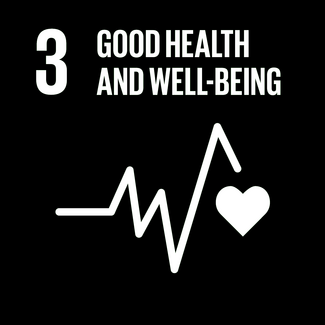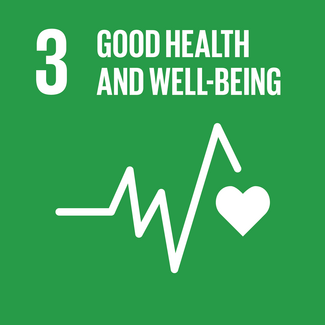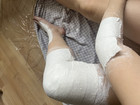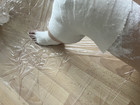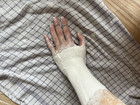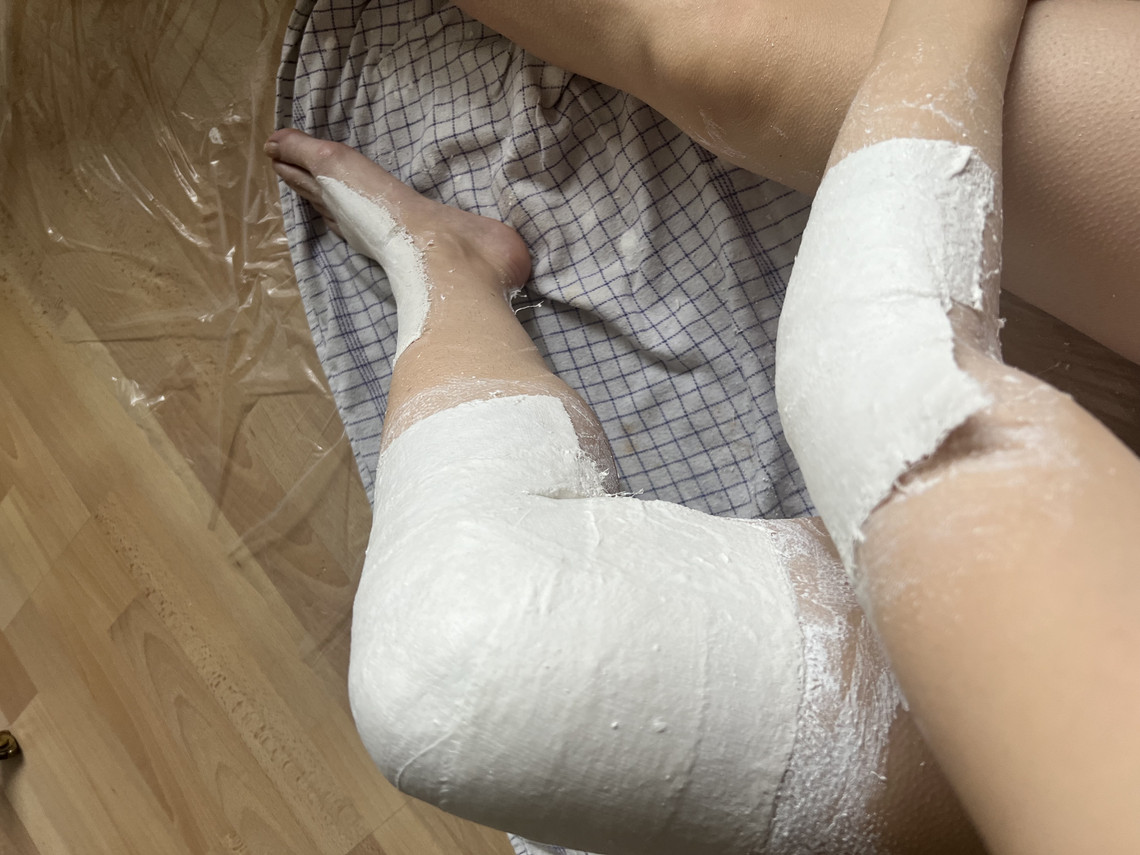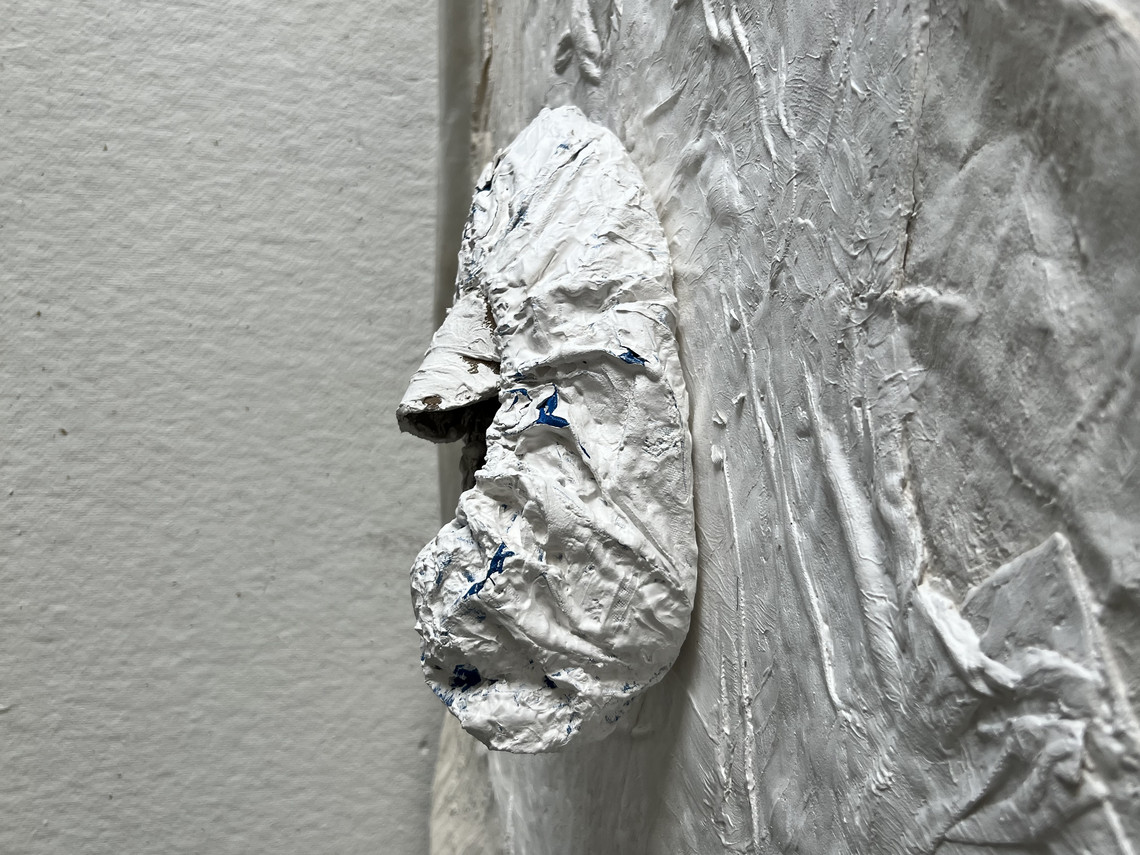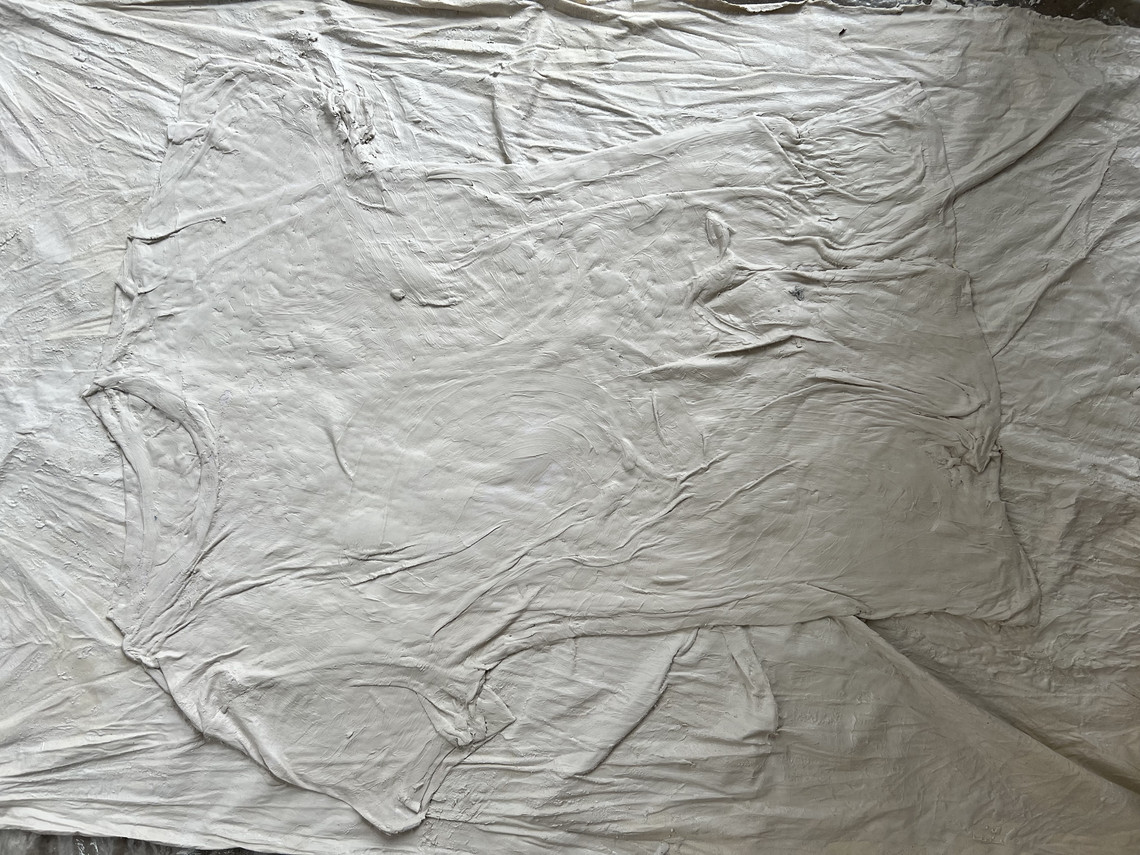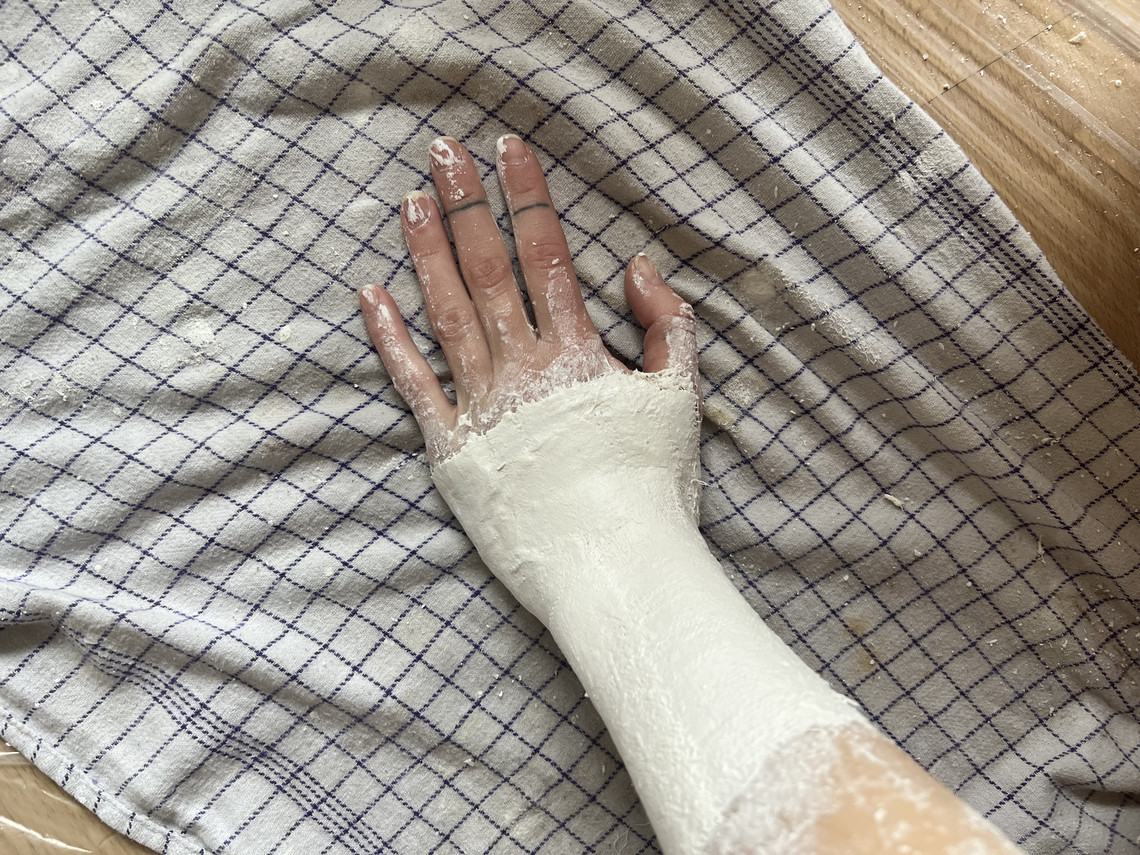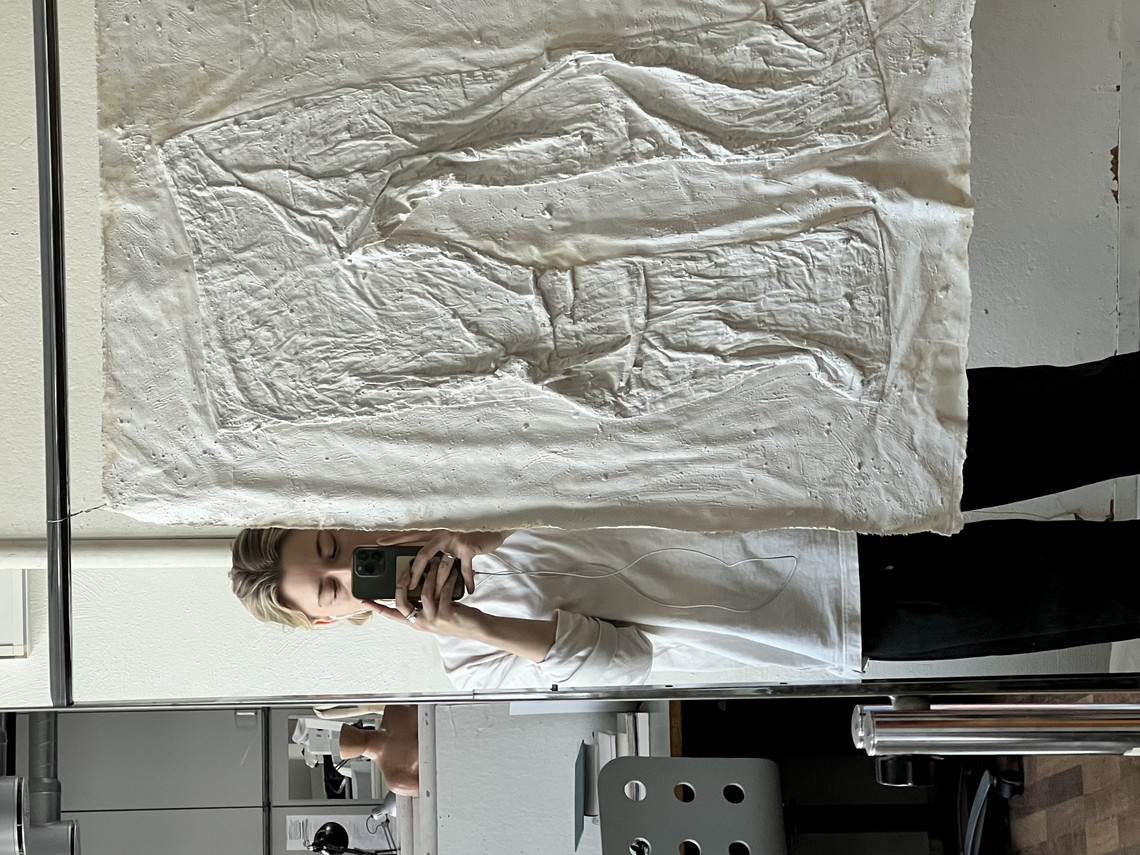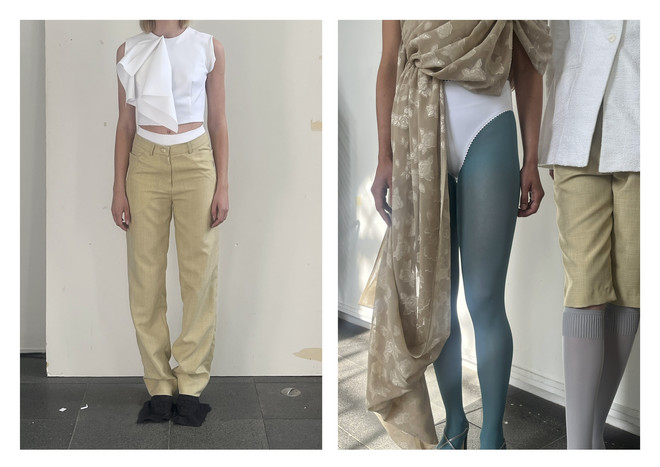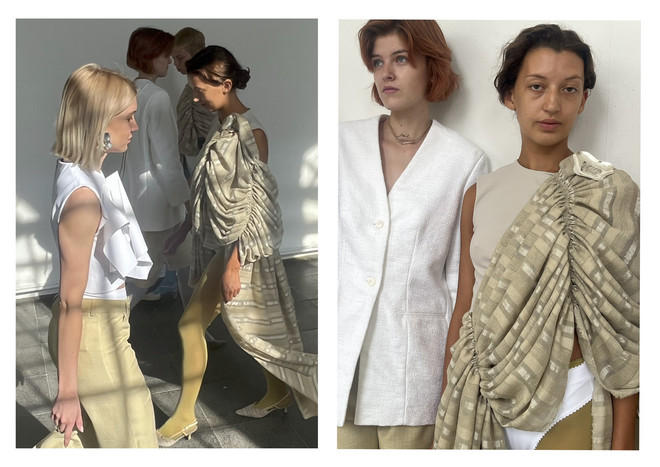
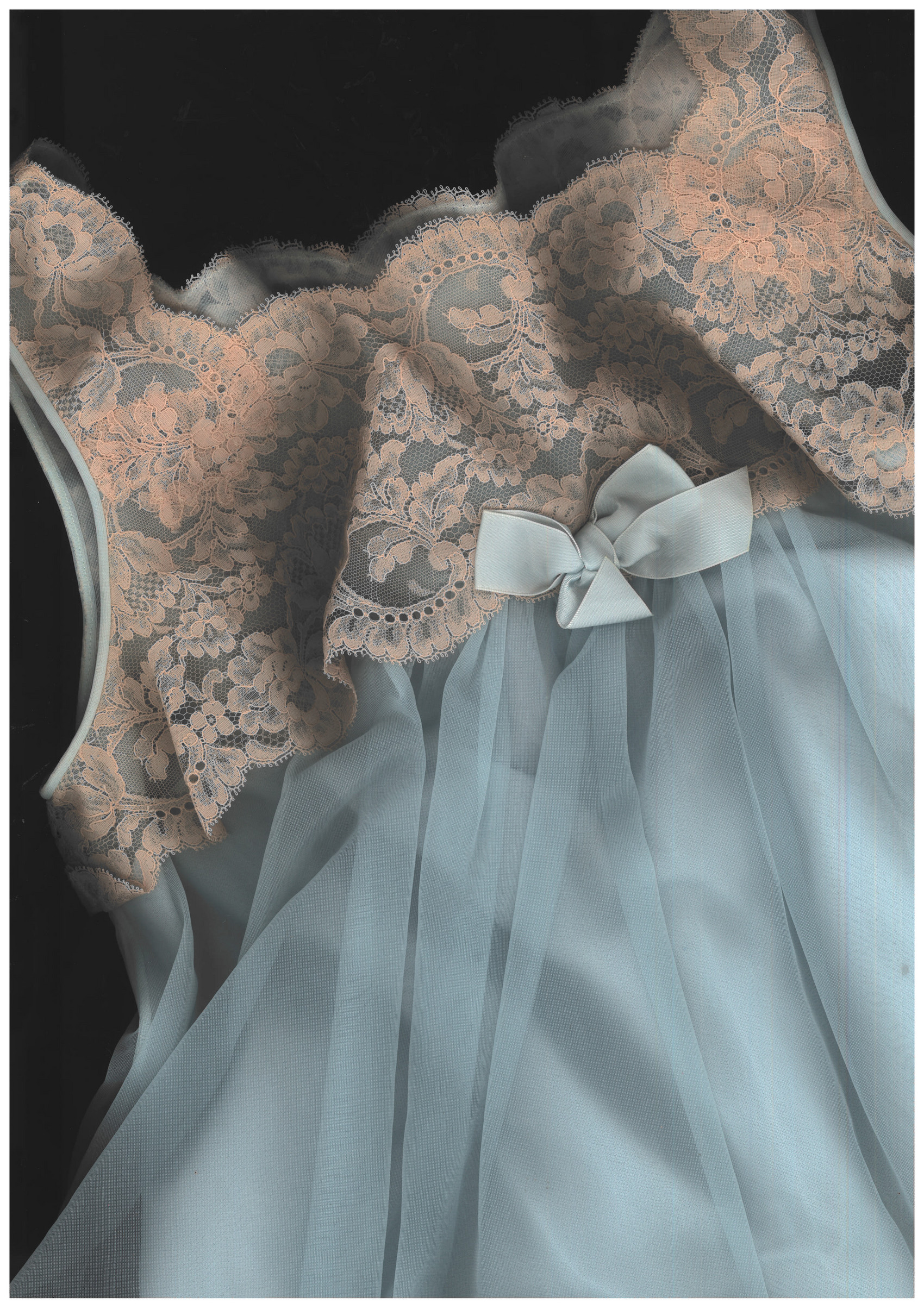
Stay Soft
The Stay Soft Collection is a result of combining fashion and philosophy; by exploring juxtapositions of soft and hard, through emotional phenomenology, the collection questions how we as humans have neglected our senses and bodily connection to our surroundings. The collection also questions the existing value-foundation of the fashion industry as economic growth overrules emotional value and well-being.
The research behind the project is mainly build upon first-hand sensory experiences made during a research trip to New York in February 2024. Using mappings of museums and encounters in the streets, photos, vintage garments and travel diary entries as the starting point for material, shape, silhouette and embellishment research.
About the designer: Working with an emotional perspective to fashion, using strategies such as user understanding through interviews and wardrobe studies, embedded storytelling, and aesthetic longevity, in the aim of creating a new language of femininity.
Localism: Working with local craftspeople. In this project collaborating with Sophia Taul / Delphi Studio on a small jewelry collection and collaborating with local tailor Magnus Månsson / MagMoon.
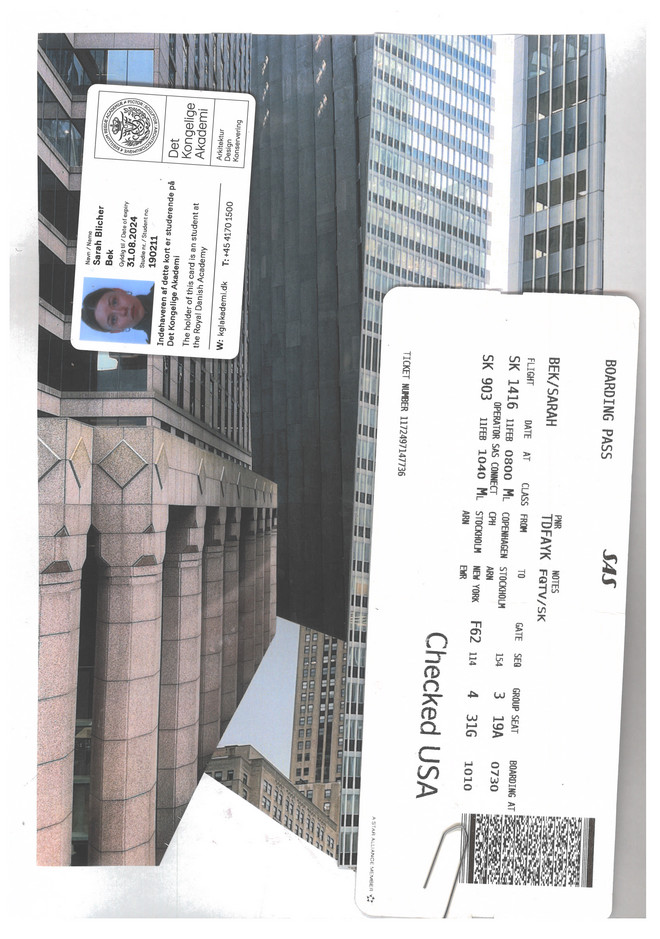
Travel diary, 18th of february 2024
‘Aesthetic burnout’ a term made-up to describe the absolute collapse of senses, mind, and the ability to perceive. I experienced my own body as a sort of pseudo-corpus, as we moved through the city on our last day, not having the ability to connect vision or touch with the body. Not having the ability to be present in the midst of the turmoil of Guggenheim Museum or appreciate the very being in the world. A complete overstimulation of the senses; affecting vision, touch, hearing and to some degree even taste/appetite.
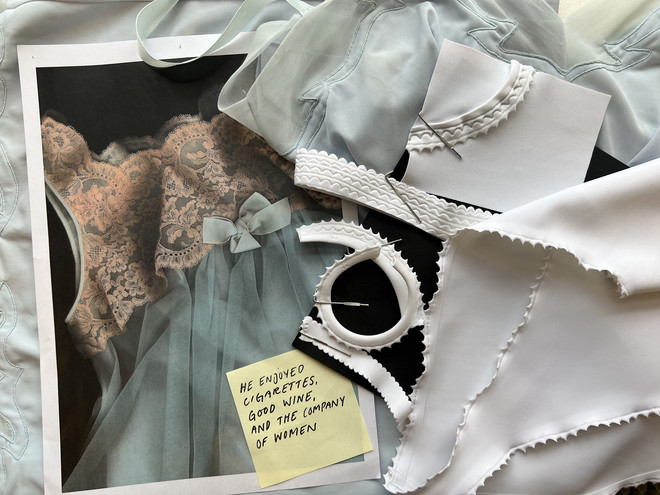
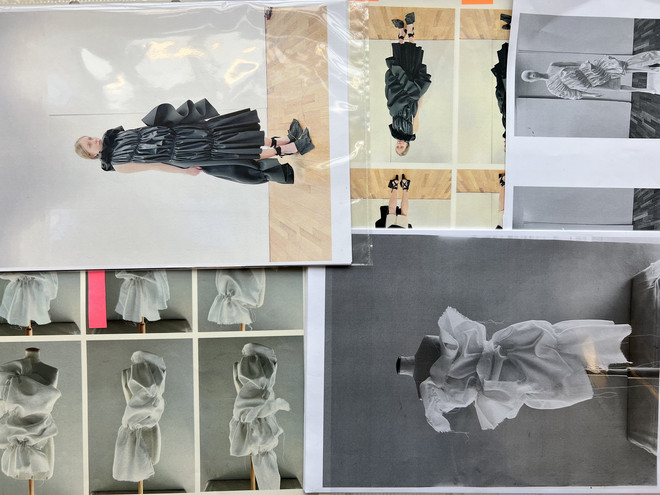
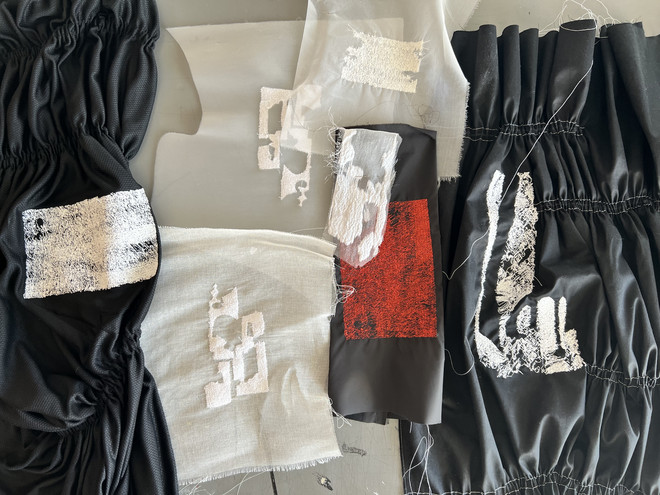
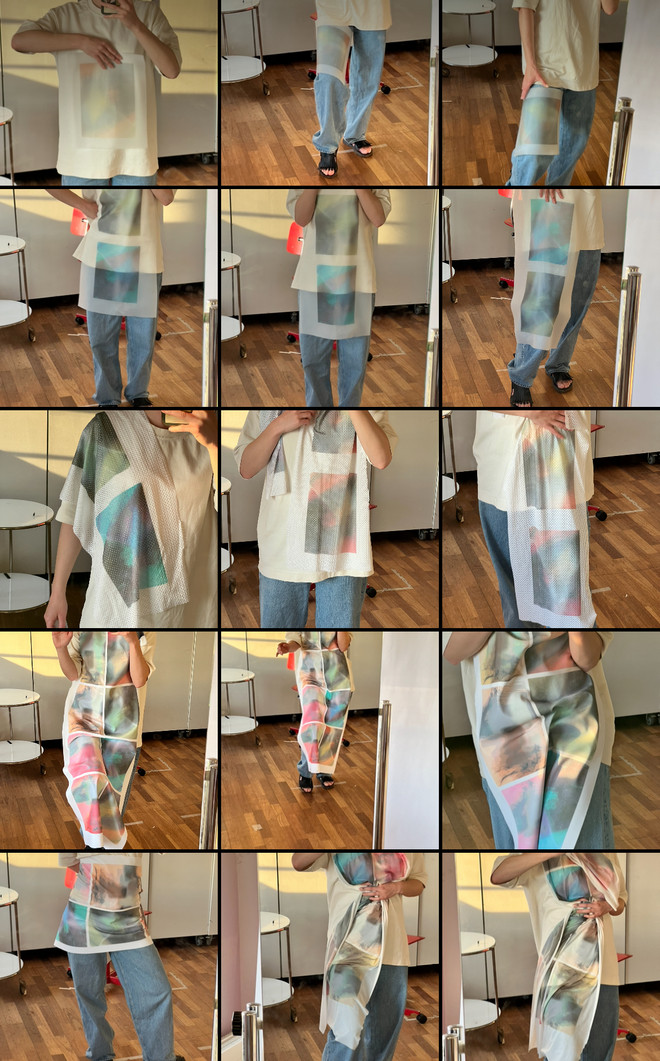
“… only if my hand, while it is felt from within, is also accessible from without, itself tangible, for my other hand, for example, if it takes its place among the things it touches, is in a sense one of them, opens finally upon a tangible being of which it is also a part.” (Merleau-Ponty p. 3: 2004)
Det Kongelige Akademi understøtter FN’s verdensmål
Siden 2017 har Det Kongelige Akademi arbejdet med FN’s verdensmål. Det afspejler sig i forskning, undervisning og afgangsprojekter. Dette projekt har forholdt sig til følgende FN-mål